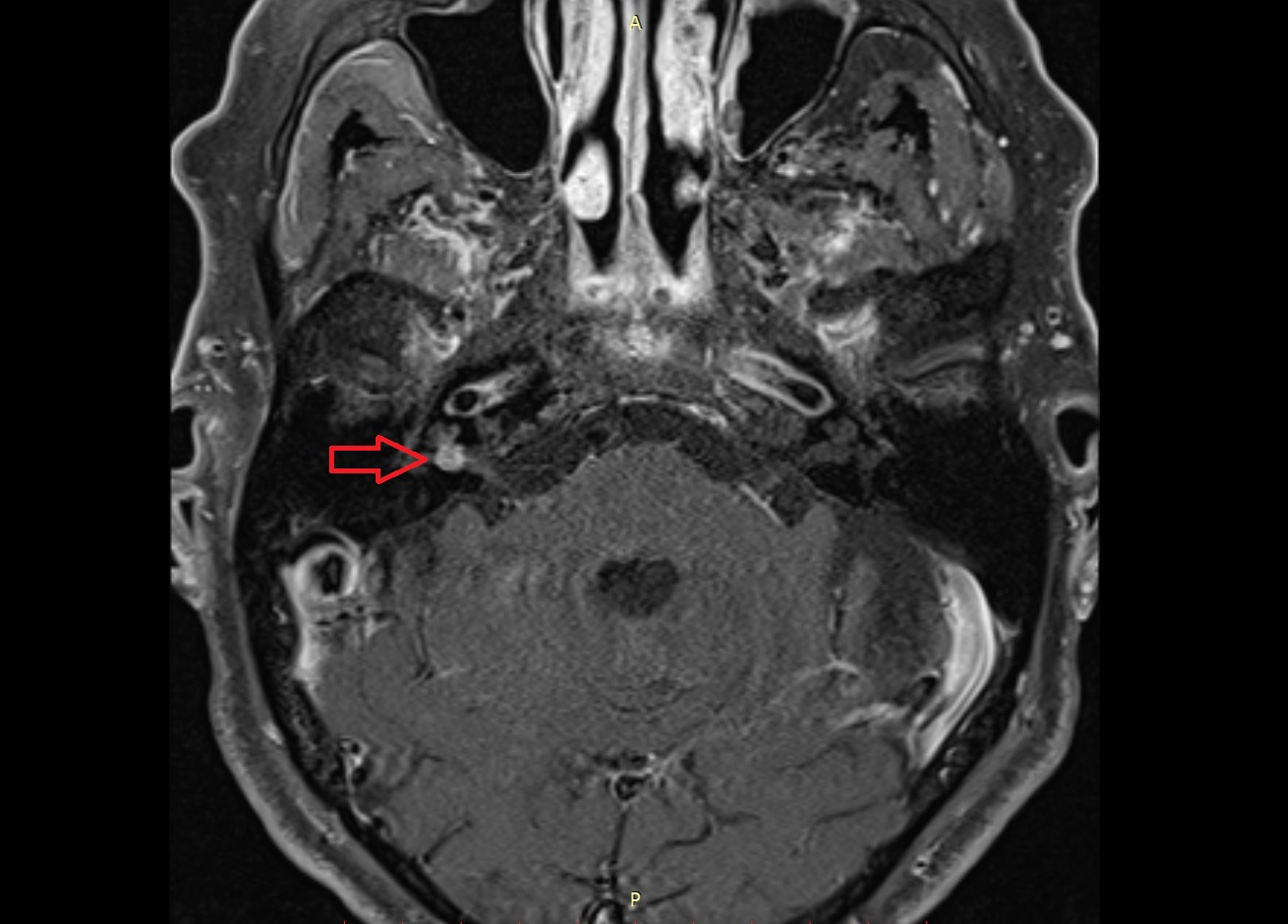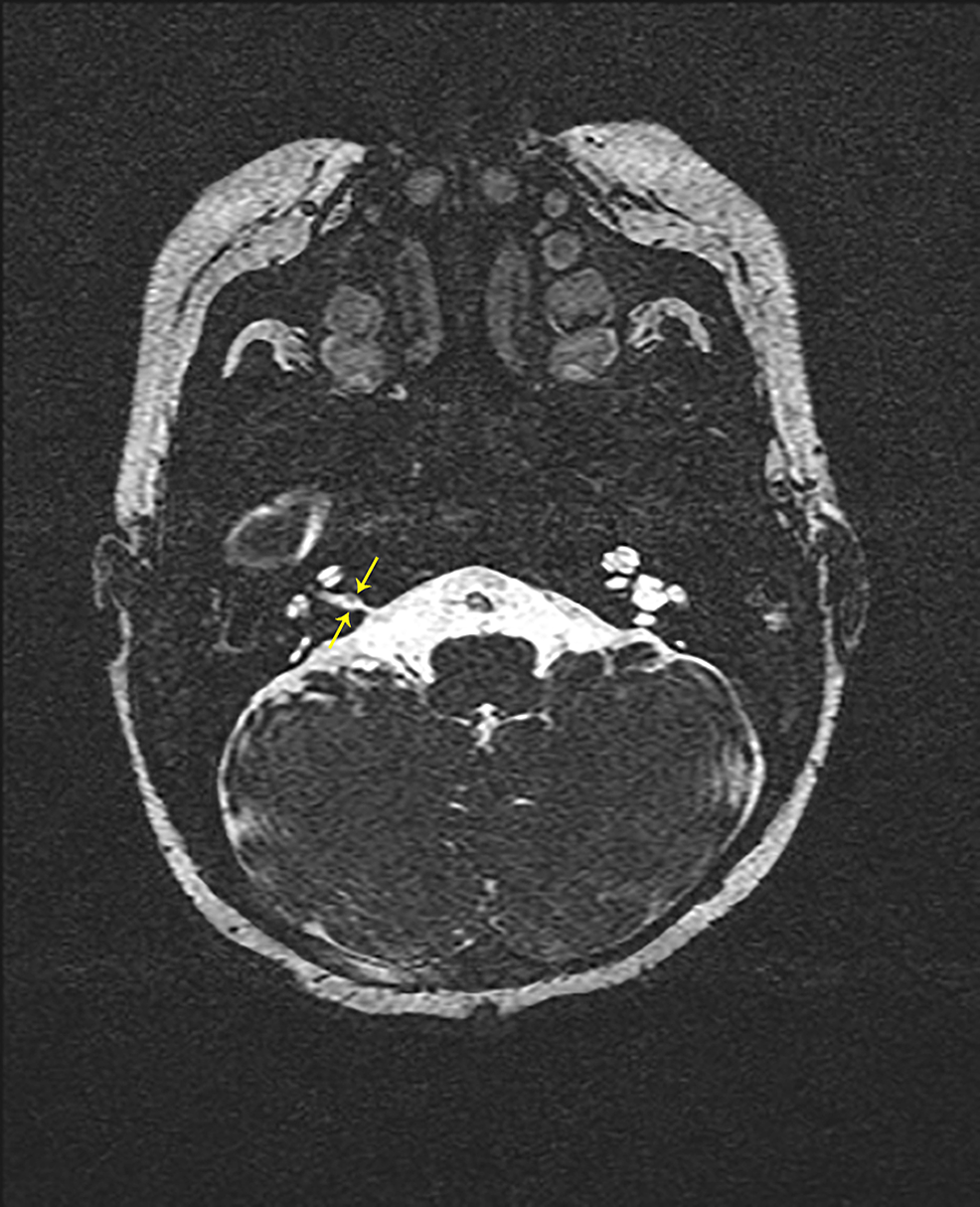
Although the tumor actually grows on the balance nerve, imbalance is usually mild or absent. They are caused by the tumor pressing on the auditory nerve. The main symptoms of an acoustic neuroma are hearing loss and tinnitus (ringing in the ears). If an acoustic neuroma is not diagnosed or treated it can grow large enough to press on important structures in the brainstem and cause major life threatening problems. An acoustic neuroma - also called a vestibular schwannoma - is a tumor of those cells. The nerves are wrapped in a layer of specialized cells called Schwann cells. The other two branches - the inferior and superior vestibular nerves - carry balance information to the brain. One branch - the cochlear nerve - carries hearing information. The cochleo-vestibular nerve (also called the eighth cranial nerve) is made up of three nerves that connect the inner ear to the brain. The first sign of one is usually hearing loss. It is one of the most common types of benign brain tumors. Last updated on Feb 2, 2023.Īn acoustic neuroma is a type of benign (noncancerous) brain tumor that grows on the vestibular nerve as it travels from the inner ear to the brainstem. We hope our website helps you to find the information & support that you are seeking.Medically reviewed by. True incidence of vestibular schwannoma? Neurosurgery. Stangerup SE, Tos M, Thomsen J, Caye-Thomasen P. Somatic neurofibromatosis type 2 gene mutations and growth characteristics in vestibular schwannoma Irving RM, Harada T, Moffat DA, Hardy DG, Whittaker JL, Xuereb JH, Maher ER. Growth characteristics of vestibular schwannomas

Moffat DA, Kasbekar A, Axon PR, Lloyd SK. Based on MRI studies, the true prevalence may be around 0.05% (1 in 200) of the population, which equates to 30,000 people, also assuming a UK population of 60 million. That equates to 1200 new diagnoses per year assuming a UK population of 60 million. The incidence is approximately 2 per 100,000 per year. An MRI scan is used to make the final diagnosis and this is the gold standard diagnostic test. There is then a careful examination of the ear and the hearing and balance systems, along with a complete neurological examination and then sophisticated audiometry to test the hearing along with a clinical balance assessment. The diagnosis of this condition is made after the patient reports these symptoms. It is therefore important to diagnose and if necessary treat these tumours from an early stage when the symptoms may only be one-sided tinnitus with a slight high frequently hearing loss. Continued growth with brainstem compression can produce further symptoms and clearly, if untreated, there is a risk to life if the tumour compresses the brainstem significantly.
#AUDITORY NERVE TUMOR SKIN#
The continued growth of the tumour may touch the fifth cranial nerve (trigeminal) and then facial tingling and subsequent numbness of the facial skin may occur.

As a result acoustic neuromas may initially go undiagnosed. In many patients these initial symptoms are mild and deceptive, because they are also associated with many other less serious conditions. This produces an overproduction of the Schwann cells and the formation of a lump, as they multiply producing a small lump or tumour filling the canal housing these nerves.Ī tumour expanding in the canal can compress the hearing (cochlear) nerve and produce hearing loss and tinnitus, unsteadiness or imbalance.

It is currently thought that one-sided sporadic acoustic neuromas arise due to a spontaneous mutation (alteration in genetic material) on chromosome 22 2. The fourth nerve passing through the canal is the facial nerve which supplies movements of the face and very rarely a Schwannoma can affect this nerve. The third nerve is the cochlear or hearing nerve, and occasionally these tumours can arise from this nerve.

These two nerves comprise two out of the three nerves exiting the hearing and balance organ in the base of the skull passing through a canal to a part of the brainstem where the hearing and balance pathways pass centrally to the cortex of the brain. To watch with subtitles, please click on the ‘CC’ tab on the bottom right of the video.Ī Vestibular Schwannoma forms as a benign growth of the Schwann cells which comprise the covering of the nerve sheaths, in this case usually the upper or lower balance nerves.


 0 kommentar(er)
0 kommentar(er)
